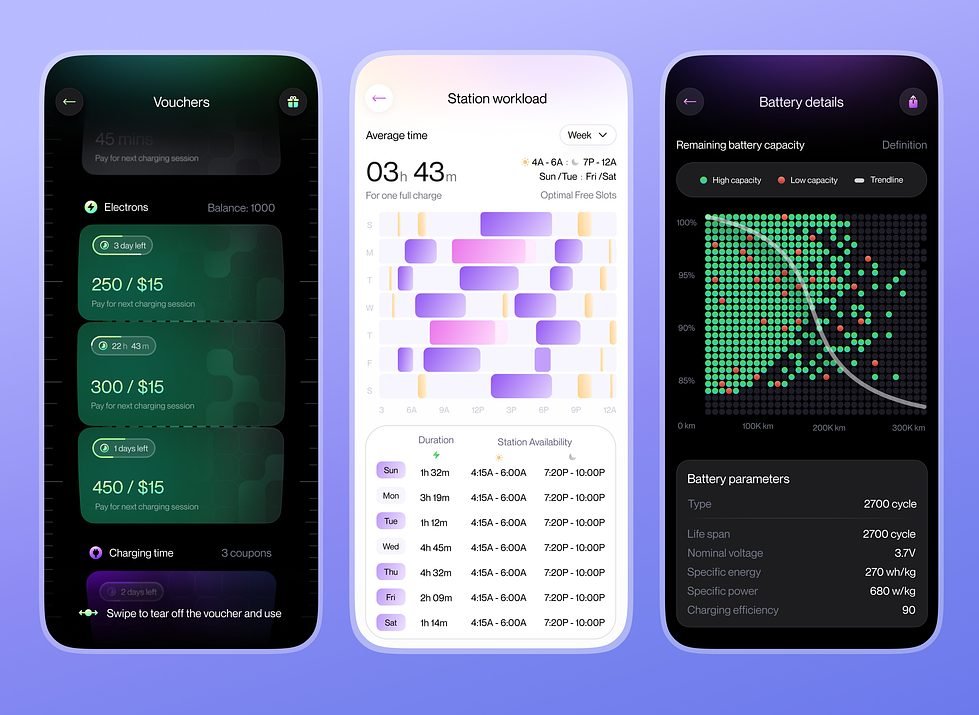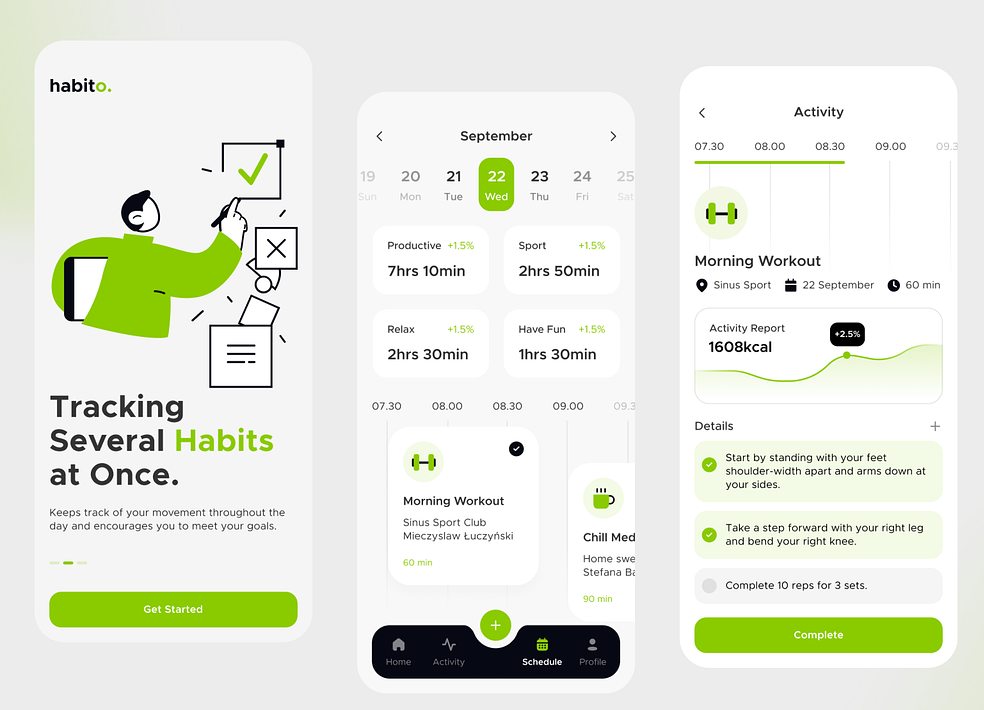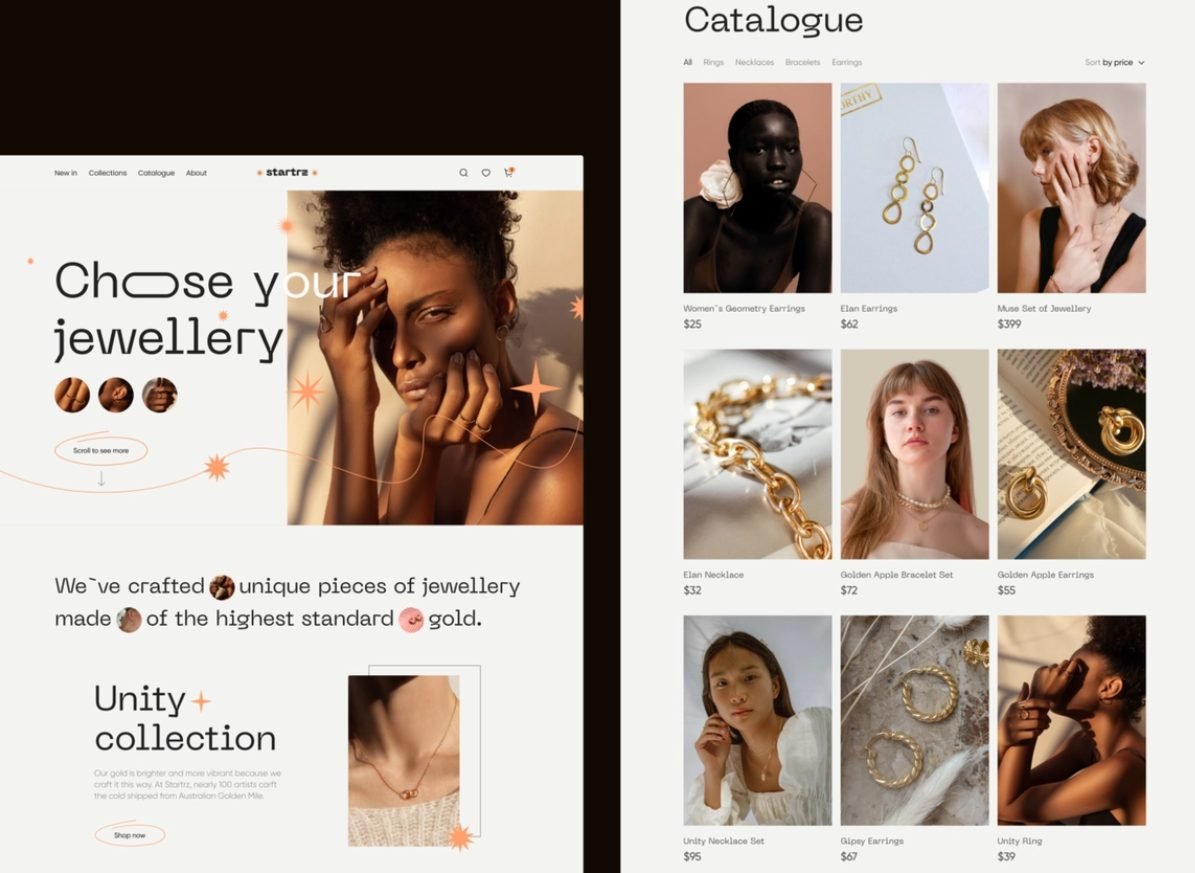Your site will need help with issues, including lousy navigation, poor user experience, and addressing improper target audience. A website renovation can address these problems. That’s why people query on redesigning and search for a reliable partner to make website changes. Learn more about how to redesign a website with us and get some useful website redesign tips.

What Is A Website Redesign?
Redesigning your website involves a thorough website redesign process that includes upgrading content, modernizing layouts, and enhancing navigation for higher conversion rates and better site performance.
Redesigning a website entails making significant changes to the code, content, structure, and visual appeal of the current version in order to better serve its users.
A top-notch website makeover often improves user experience (UX), lowers bounce rates, and boosts sales. Process redesign entails changing techniques, strategies, and operations in order to enhance overall process effectiveness. Benchmarks are used in process redesign to gauge success and track progress.
Reasons To Website Redesign
Redesigning your website requires time, money, and work, but it can also be crucial to your success online. If it is in accordance with your complete company plan, redesigning your website can help you increase conversion rates, improve rankings, and better serve your staff and consumers. Let’s check on the key reasons why you may need it asap.
Current Design Feels Outdated
If you find out your website is a challenge to use it’s a sign that you need some improvements. Within the first few seconds of seeing your website, visitors must be able to find what they’re looking for. It affects conversion and other factors. So, beware.
Website Functions Bad
Poor website design is characterized by a cluttered layout, a buried navigation menu, a lack of color contrast, a non-responsive design, and inconsistent typefaces, to name a few. Still, a lack of user-centricity is the major problem with websites with poor design.
Sales Decreased
Without considering user experience (UX) and SEO, websites run the danger of losing visitors because of difficult-to-navigate pages, slow-loading pages, unclear calls to action, and other issues. Privacy and security concerns, pages that won’t load, link failures, lacking pictures where they are needed, etc. Numerous technical problems have the potential to repel visitors. And that affects sales.
The Sales & Marketing Plan Changing
Websites don’t merely exist to represent brands online. They can also be incredibly effective sales and marketing tools when put up in that way. You might be dealing with that right now. Either your client, sasles team or marketing wants some extra features, to upgrade your website and have a marketing strategy or features better adjusted for the changes.
What kind of marketing or sales plan is lacking should be determined first:
- SEO
- blogging as content marketing
- Integration of social media newsletter subscription sales funnels
Even if any or all of these are absent, you should concentrate on one at a time. Since SEO is the most crucial of the group, you should start there if it isn’t performing as it should.
Don’t limit your consideration to how you’ll improve or add to the sales and marketing features. Take into account how their presence will impact elements like the homepage’s content and navigation arrangement. The site will therefore probably need new features, but you’ll also need to change the rest of the design to make those elements more visible and functional.
Too Much Time Fielding Questions and Concerns
Websites include functionality that enables users to perform tasks, such as browsing the site, submitting an online form, or utilizing interactive design elements in addition to information. Don’t’ waste your users’ time by offering them poor UX/UI solutions that irritate and deter them from what they want from your business.
Business is Pivoting
If not a complete redesign, a rebrand is definitely necessary when a company’s mission, purpose, or offer has changed. A company turning around is common. Sometimes this is because to the niche it was in no longer being relevant, and other times it’s because they’ve discovered a better user group to target, etc. The company’s website and messaging will need to be completely redesigned if the change goes beyond the brand’s visual identity.
Not All Design Is Mobile-First
For years, Google has been promoting mobile-first design. Additionally, it just started giving websites that prioritize mobile users greater results than ones that don’t. Designing a website first that is for mobile devices and later for desktop computers is what is meant by the phrase mobile-first design.
You may redesign a simpler and more efficient experience for each visitor as a result. Additionally, it stops you from removing parts for some visitors while leaving them in for others (such as a section that looks bad on mobile). So, with a mobile-first design, the experience is uniform across all devices.
Phases of a Website Redesign Project Plan
An effective web redesign project plan should focus on accomplishing both your company’s and your customers’ objectives. When designing a website redesign, creating buyer personas is a terrific addition since it allows you to take into account their needs and how the website may help them when they visit it. Let’s check on that a bit in detail.
Clarify Website Stakeholders Needs
Why is it vital to determine the demands of stakeholders? Stakeholder identification is crucial for both identifying the company’s stakeholders and choosing the appropriate strategy for managing their expectations. Every stakeholder has expectations or demands from the business or how it operates. Clarify your website stakeholders needs, to match them with the redesign goals.
Analyze Website Performance
You may better understand how your current website is performing and which metrics you can improve through a redesign by documenting your current performance metrics before you begin the website redesign planning process.
Check each area’s monthly performance on your current website. It’s helpful to collect each data before you begin redesigning your website because the relevance and importance of each metric may vary depending on the goals of the redesign.
Document Current Metrics
You should have a clear website redesign strategy. For this, all the metrics or benchmarks that may be documented will include:
- Visits, visitors, and unique visitors total
- Bouncing rate
- length of stay
- Top-performing search terms in terms of traffic, lead generation, and rank
- number of domains with inbound links
- Total number of fresh leads and form fills
- Total amount of sales made
- number of pages indexed
- total number of pages visited
Make a note of the tools you previously used to evaluate each of these benchmarks as well. When gathering your post-redesign analytics, you should ideally use the same technologies. You would otherwise be contrasting apples with oranges.
Set Redesign Goals And Create A Plan
Your website’s functionality is the same and equally important as how it looks. Be The usability of your website is just as crucial as its aesthetics. When rebuilding your website, be very clear about your objectives and link them to measurable results. After that, communicate your objectives to your team, designer, or agency.
Consider the following data-driven goals for your own website:
- to boost both visits and visitors (both of which are crucial because a visitor might pay a second visit)
- decrease the bounce rate
- lengthen the period spent there
- enhance domain authority
- increase the number of form submissions and new leads overall
- boost overall sales efficiency
- improve your current SEO positions for significant keywords.
Many of these goals depend on one another. To increase conversions, for instance, you could need to increase visitors while lowering your site’s bounce rate. Consider looking at the metrics you acquired in the earlier phase. Are there any metrics with which your new website could provide assistance? Perhaps you use the metrics from your old website to inspire your new goals.
Determine the Most Useful Pages on Your Website
Discover which pages generate the most traffic and inbound links, convert the most leads, and ultimately cover the most important subjects in your business by using your marketing statistics. Be careful to implement the appropriate 301 redirects if you intend to remove these crucial pages.
Consider what aesthetic elements of your website need to be updated and what may remain the same as you establish your corporate branding. Have you updated your brand’s colors, style manual, or logo? Be sure to use these to keep your new website consistent with other elements of your brand. Check out our collection of the best B2B website page examples for more ideas:
Define Your Visual Language, Branding & Messaging
Before you start developing the layout and content for your new website, be certain that your wanted identity, narrative, and unique value proposition are crystal clear. This will provide consistency throughout the entire website.
Any new visitor to your website needs to be fully aware of what you do, how it might benefit them, and why they should stay on your site rather than visit one of your competitors.. Use simple, direct language as you create your messaging. Avoid using industrial jargon in your writing because it could turn off some of your audience and make you sound more robotic than human.
Define Your Redesign Budget
Budget here is the project plan for website redesign, initially anticipated design and construction cost, which is determined after the Preliminary Design Report is finished and before work on the final design. Everything is done to try to make your life easy. The first benefit is that it enables you to give the project a budget and base important decisions on it. Additionally, it helps you get a sense of what can be accomplished for slightly less, then slightly more.
Understand Your Clients
Businesses run the danger of doing poorly if they are unaware of their position in client relationships. Additionally, companies must be conscious of their customers’ expectations and adaptable when those expectations change. By doing this, both sides can develop a trustworthy relationship. The same’s with your website redesigning. Let their needs lead you on the way to a new look and improved functioning.
Update Your Site’s Content
Any online-based firm must regularly update its material in order to function. When the content on your website is maintained up to date, visitors will feel more trust in it and are more likely to make a purchase. It is frequently necessary throughout the redesign, especially if you also completely rebrand or change your brand positioning and messages, etc.
Take Care of Redirects and Research Keywords
Temporary redirects can transfer some link authority in terms of SEO. They also inform search engines that the new URL isn’t canonical. In real life, temporary redirects are useful for testing. However, they won’t transfer as much link juice, if any, as a 301 does. Pay attention to setting your new website redirects and do thorough research for optimizing the pages with the proper keywords before you come up with a great website structure.
Build Website Structure
Choose a menu bar: vertical or horizontal. Maintain a unified navigation menu across the entire website. Ensure everything is easy to view (if the menu is fixed and scrolls, use a solid background, etc). Your SEO approach must consider site structure. Why? Because Google can tell from your website’s structure which pages are most significant. This means that the organization of your website can affect which content will appear first in search results and so much more.
Sketch Out New Website Interface
Focusing on concepts is the first step in creating an excellent UI sketch if we need a UI reworks. Try as many concepts and revisions as you can. It doesn’t matter if your sketches are incomplete and, well, sketchy or if they aren’t particularly good ideas. Determine the most effective design strategy for the project context and pick the best UX/UI to implement. Get some top-notch examples to understand better what you need like this:
Graphic Design Tips
If you want to redesign with special taste and style, you may also query some inspiring graphic design pieces of advice that may come in handy during your project redesign. Have some here
Choose few fonts
Never attempt to revamp a project with too many designs. Choose a limited number of fonts to give your projects a polished, sophisticated appearance. Utilizing no more than three typefaces in a single project is recommended. It appears amateurish to cover your canvas with numerous fonts. People will observe the irregularity in your redesigns and understand that little work was put into the planning process. Selecting the typefaces before starting the redesign process is preferable because they are crucial for branding.

Adjust texts
Adapt the text’s width and height. Never disregard the text’s height or size. Spend some time adjusting the text that is superimposed on an image by adjusting the line height and letter size. This aids in producing a box effect to give your photographs a tidy appearance. By ignoring this advice, you’re leaving out a crucial component. Words or phrases that you want to highlight can stand out more in text that has been structured properly.
Adjust design elements
Bold, obvious objects frequently draw more attention than smaller, less obvious ones. If your design has a lot of different items, attempt to make the main object bigger than the others and scale all the other elements, like the text and buttons. Small details and shapes could be overlooked or overpowered by other design components.
Adjust background transparency
Make the background more transparent to make the writing more noticeable. Images and text don’t always go together well. The text might be obscured if you put an image as the background. This can be avoided by reducing the background’s visibility through transparency. Failure to adhere to this guideline could produce a disorganized image that turns onlookers away. The text won’t be readable and won’t convey the desired message.

Space out
The readability of text may be impacted by letter or any other element spacing. A text that is cluttered and difficult to understand won’t hold the attention of potential buyers. They will go on, denying you the opportunity to convert them. Separate the letters. The distance between letters in a word can greatly impact how readers react to your design. To make the design easier to read, make sure the letters are evenly spaced.
Optimize empty spaces
Contrary to popular belief, occasionally having vacant areas can be advantageous. Empty spaces highlight the small region of text or artwork on the image. They simplify and sharpen the redesign. This advice is especially helpful for pictures that convey one message. Viewers will be drawn away from the main message by an image cluttered or with a lot going on at once.
Practice transparency
Changing the opacity levels of the text using transparent fonts will improve its aesthetic appeal. It’s a straightforward effect, but when utilized properly, it multiplies creativity.
Maintain consistency
Maintaining consistency is essential to communicating the tone and vibe of the entire image and helps to bind the design together. Make sure you have a clear vision of how you want your brand to appear before you begin. Be consistent with your typography’s size, spacing, color tones, and other design components. Ignoring this design principle could cause your work to come off as amateurish and unprofessional. Messy photos are difficult to look at, and viewers will quickly move on to more appealing ones.

Apply 3D
Excellent 3D elements if appropriate are a way out. Don’t undervalue the influence of flat designs, though. These 2D pictures have been more popular recently and are a great option for novices who are still getting used to the design environment. It can take a long time to create 3D pictures and include them into your design, especially if you don’t know how to do it properly.
Use iconography unique to the project
Using icons specific to your company can give your photographs a genuine, polished appearance. If your design’s message allows, you can integrate well-known logos, like those of Netflix and Twitter, to increase its relatability. Any iconography that works with your brand may also be used. Icons come in flat or three-dimensional designs, in color or black and white.
Keep a visual hierarchy
Sometimes, all that is needed is an image — no text! Using particular picture kinds that rely on visual clarity, such comparison photos, you may quickly convey your message. The attention span of a human is only a few seconds. They could be put off by reading text. They might not be interested in investing the time and energy to read what you have to say. But they’ll probably remain around if you can get your point across quickly.
Remember your target market
Your target audience should also be considered while producing designs in addition to branding. Make sure your designs are fit for the target demographic and speak to them. You will fail to draw in new clients and lose existing ones if your redesigns do not directly address your target audience as it was previously. The intended audience won’t understand the messaging, and your design won’t appeal to them form the start.
Examine the competition
If your competitors’ visuals are more alluring than yours, all of your design efforts will be for nothing. Do enough research by examining the published information of your rivals to comprehend what your image demands completely. If you do not understand your redesigns’ standards, you will probably fall short of them. This will lead to a time and energy waste and an ineffective image. For a better understanding, get some expert help from a design expert.
Be bold
When you consistently use the same design aesthetic, visitors eventually become bored with your creations. A corporation can engage with its audience by using visuals. This implies that in order to maintain their audience’s interest, their style and imagery must change or go through rebranding phases.
Take the risk of stepping outside of your business comfort zone. Choose strong typography, unconventional concepts, and imaginative redesigns. Using contrasting colors for a dramatic effect, strategically placing text, or doing anything you want to make your designs stand out are all examples of website redesign being bold.
Fireart Expertise
There are sound and awful design days, just like everything else. And Fireart is well aware of this fact. It’s a process of ongoing learning that requires patience and repetition. Each redesign you produce enhances your experience and helps you become more skilled at what you do. So, this is our improvement. Your learning process will be slowed down by irregular practice. Long stretches between designs can cause you to lose touch with your inner designer. At Fireart, the teams practice all the time, producing incredible redesigns and designing things from scratch that have been beautiful and functional for years. That’s why they are one of the leading design teams with unlimited expertise. Your challenges are a good food for thought for the Fireart graphic designers and other team specialists who participate in each creative process. Look out the cases, and feel free to contact the team for your redesign website.
Get Started On Your Website Redesign Today
So, no doubt, the website revamp is truly a glow-up. You improve that aged, worn-out appearance into the present, where everything looks good and dope and works perfectly well or at least better than earlier. Find out what that means by starting with the fundamentals. A website audit is the greatest approach to determine which imperfections are plaguing your website. Spend time reviewing every nook and cranny, testing out all the buttons and forms, watching all the videos, etc. The necessary elements and pages can then be redesigned better. Often, this is more than just a makeover. The upkeep enhances the audience’s perception of your brand, the website’s operation, and the results your business brings. But don’t just take our word for it. Redesign your website and watch as your brand grows like never before. Do it with our assistance in no time.




















